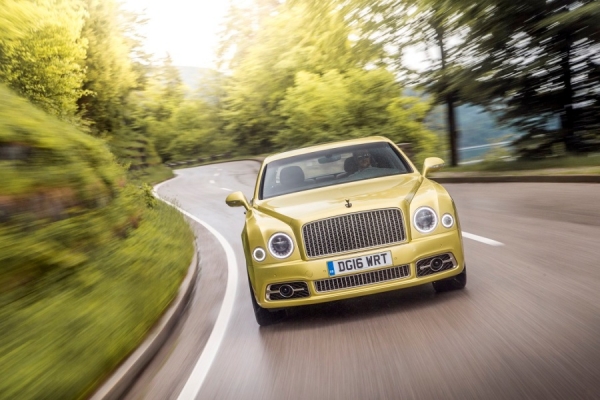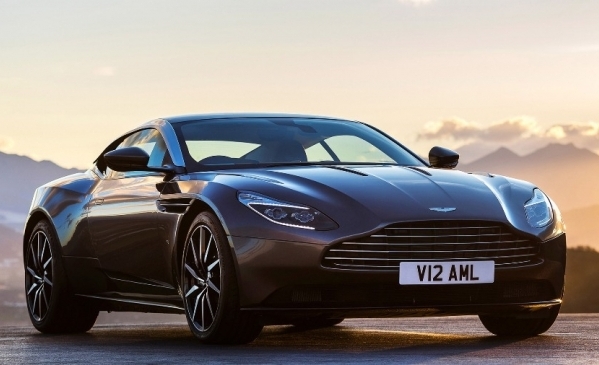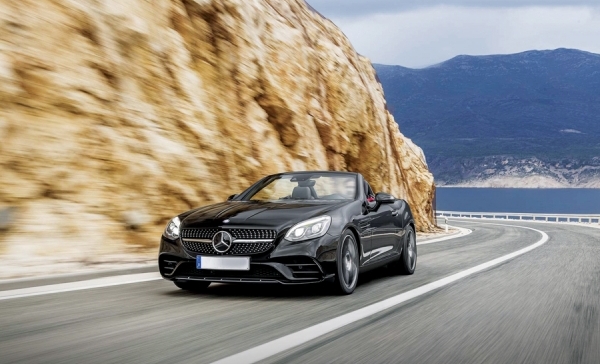
In some respects, cars are like clothes. The vehicle one chooses to drive, like the clothes one chooses to wear, reveals to the world certain aspects of wealth, taste and interests – one’s cultural “tribe” and where one fits into its hierarchy.
Spot someone around town wearing a North Face jacket and Columbia boots and it’s a fair bet they are an outdoorsy type, while a Nike and Lycra-clad person is a good candidate for sweaty laps around the running track. What one seldom sees, however, are people wearing the full hobby-clobber outside of context. There is a certain corollary with cars. Driving the new Lotus Exige Sport 380 on the weekly supermarket run is the automotive equivalent of browsing the fruit and veg aisle while wearing full running spikes, a race number and Lycra that leaves nothing to the imagination.
Lotus’ latest iteration of its stripped-out, high-performance coupé is perhaps the most hardcore racing-car-for-the-road that the company has ever made. The Exige is based on the Elise chassis, but with the emphasis on raw, visceral speed, rather than top-down, devil-may-care playfulness.

The base model Exige started life as an extreme performance machine, bereft of creature comforts. The company then upped the ante by releasing the Sport 350 edition, with more power and less weight. The latest Sport 380 version takes the “more power, less of everything else” approach to the next level.
The price is the first change to grab the attention of would-be buyers. At £67,900 (HK$655,300), some £11,000 more than the Sport 350, the 380 is not a cheap motor. All that extra cash buys an extra 30 horsepower – Lotus having tampered with the same 3.5 litre supercharged V6 motor, now producing 375 horses, instead of 345. The power gains are largely thanks to increased supercharger boost pressure, changes in the ECU computer trickery and an upgraded exhaust borrowed from Lotus’ more civilised Evora sporting grand tourer.

The sum of £11,000 for 30 horsepower doesn’t sound like money well spent, and on its own it wouldn’t be. But an even more souped-up engine isn’t the full extent of changes from the Sport 350 edition of the Exige. Due to a combination of front-mounted “canards,” a rear wing and a maze of other outlandishly sculpted aerodynamic extras, the new car produces some 60 percent more down force at top speed.
The engine cooling system has also been uprated, enabling fuller use of that more potent engine for longer in warmer weather. The capacity of the fuel tank has also been expanded to 48 litres. Again, with extra endurance in mind.
 Despite a bigger tank and radiator, the new car is 15 kg lighter than the older model, thanks to weight-reducing aluminium wheels, as well as carbon fibre seats, a rear wing and diffusers. Before troubling the petrol pump, the Sport 380 weighs in at just 1,066 kg – less than half the mass of a Bentley Continental GT.
Despite a bigger tank and radiator, the new car is 15 kg lighter than the older model, thanks to weight-reducing aluminium wheels, as well as carbon fibre seats, a rear wing and diffusers. Before troubling the petrol pump, the Sport 380 weighs in at just 1,066 kg – less than half the mass of a Bentley Continental GT.
The combination of power and light weight makes the Exige Sport 380 predictably fast. The sprint to 62 mph (100 kph) takes 3.7 seconds. While not quite as fast as top-draw (and top-dollar) supercars such as the Ferrari 488 or McLaren 675, it’s still shatteringly quick.
Raw power has never been the Lotus way. The company built its reputation by making cars go fast around bends, rather than in straight lines. In this department, the 380 doesn’t disappoint. The amount of lateral g-force is something of a revelation. It will reveal, for instance, any unwanted poundage that the driver was unaware he or she had, as cornering forces make it wobble to and fro.
 Perhaps even more surprising than the Exige’s capacity for impromptu bodily displacement, is just how manageable the whole experience is. The cornering is stable, un-fussed and controllable. The sheer speed takes a little while to get used to, but it’s never scary. Assuming that the driver has enough stamina for an extended spell behind the wheel, such vast lateral forces start to seem normal.
Perhaps even more surprising than the Exige’s capacity for impromptu bodily displacement, is just how manageable the whole experience is. The cornering is stable, un-fussed and controllable. The sheer speed takes a little while to get used to, but it’s never scary. Assuming that the driver has enough stamina for an extended spell behind the wheel, such vast lateral forces start to seem normal.
Approaching a corner, squeezing on the brake pedal immediately brings a surge of deceleration courtesy of the AP racing discs borrowed from Lotus’ 3-Eleven track racer. The car responds almost instantly to the brakes, with almost no time wasted waiting for the suspension to settle as the weight transfers forward. Despite the power-assisted braking and ABS, the middle pedal is very communicative, sending instant tactile messages about how close the front wheels are to locking up.
 The transition from braking to cornering is similarly smooth. There’s little need to wait for the springs to settle down before exploiting the car’s grip to its full extent. There’s no power steering on the Exige, so the fingertip feel of front wheel grip levels is near-telepathic. The driver knows exactly how well the front rubber is getting along with the tarmac and can make fine adjustments to suit.
The transition from braking to cornering is similarly smooth. There’s little need to wait for the springs to settle down before exploiting the car’s grip to its full extent. There’s no power steering on the Exige, so the fingertip feel of front wheel grip levels is near-telepathic. The driver knows exactly how well the front rubber is getting along with the tarmac and can make fine adjustments to suit.
Other cars are similarly responsive, but that immediacy usually comes at the price of being skittish and unsettled. The Lotus manages to be both fast and relatively smooth. Of course, the only place that one can safely explore the benefits of all those enhancements is the racetrack. The aerorodynamic downforce only really starts to make a difference at 100 mph or so – well beyond a reasonable speed for negotiating any bends on a public highway.
 So the Exige is an exemplary performer in track conditions, but what about the real world? The first thing one notices is that one needs to be almost as agile as the car itself getting in and out of the low-slung cockpit. Then there’s the noise. The sense of connection with the road means that tyre roar is ever present – fine for the sensory explosion of high-speed thrills, not so fine for an extended motorway cruise. Having completed a journey, the Exige can be surprisingly tricky to park. That lack of power steering means a workout at the wheel during tight manoeuvring, somewhat offset by its feather-light kerb weight.
So the Exige is an exemplary performer in track conditions, but what about the real world? The first thing one notices is that one needs to be almost as agile as the car itself getting in and out of the low-slung cockpit. Then there’s the noise. The sense of connection with the road means that tyre roar is ever present – fine for the sensory explosion of high-speed thrills, not so fine for an extended motorway cruise. Having completed a journey, the Exige can be surprisingly tricky to park. That lack of power steering means a workout at the wheel during tight manoeuvring, somewhat offset by its feather-light kerb weight.
The Sport 380 is not without some nods towards luxury, however. The carbon fibre seats are comfortable as well as supportive. This model also comes with Bluetooth connectivity for the first time. Perhaps the biggest tick in the comfort box, though, is the ride quality. That forgiving handling translates into fairly supple suspension. It’s not Jaguar XJ smooth, but it’s nowhere near as harsh as you’d fear from so agile a car, making less than perfect roads relatively easy to handle.
The 380’s natural competitor is the Porsche 911 GT3, which is also known for its speed. The 911 wins in terms of badge appeal and display of spending power, at around 50 percent more expensive than the Lotus. It would also win a drag race, but the Exige wins almost everywhere else. It’s faster around the track, has a nicer ride and shows the world you know what to look for in a no-frills thrill machine, beyond the hefty price tag.

Model Lotus Exige Sport 380
From £67,900 (HK$655,300) Engine 3.5 litre supercharged V6
Power 375 bhp at 6,700 rpm
Torque 302 lb ft at 5,000 rpm
Transmission Six-speed manual through rear wheel drive
0-62 mph 3.7 seconds
Top speed 178 mph











 Despite a bigger tank and radiator, the new car is 15 kg lighter than the older model, thanks to weight-reducing aluminium wheels, as well as carbon fibre seats, a rear wing and diffusers. Before troubling the petrol pump, the Sport 380 weighs in at just 1,066 kg – less than half the mass of a Bentley Continental GT.
Despite a bigger tank and radiator, the new car is 15 kg lighter than the older model, thanks to weight-reducing aluminium wheels, as well as carbon fibre seats, a rear wing and diffusers. Before troubling the petrol pump, the Sport 380 weighs in at just 1,066 kg – less than half the mass of a Bentley Continental GT. Perhaps even more surprising than the Exige’s capacity for impromptu bodily displacement, is just how manageable the whole experience is. The cornering is stable, un-fussed and controllable. The sheer speed takes a little while to get used to, but it’s never scary. Assuming that the driver has enough stamina for an extended spell behind the wheel, such vast lateral forces start to seem normal.
Perhaps even more surprising than the Exige’s capacity for impromptu bodily displacement, is just how manageable the whole experience is. The cornering is stable, un-fussed and controllable. The sheer speed takes a little while to get used to, but it’s never scary. Assuming that the driver has enough stamina for an extended spell behind the wheel, such vast lateral forces start to seem normal. The transition from braking to cornering is similarly smooth. There’s little need to wait for the springs to settle down before exploiting the car’s grip to its full extent. There’s no power steering on the Exige, so the fingertip feel of front wheel grip levels is near-telepathic. The driver knows exactly how well the front rubber is getting along with the tarmac and can make fine adjustments to suit.
The transition from braking to cornering is similarly smooth. There’s little need to wait for the springs to settle down before exploiting the car’s grip to its full extent. There’s no power steering on the Exige, so the fingertip feel of front wheel grip levels is near-telepathic. The driver knows exactly how well the front rubber is getting along with the tarmac and can make fine adjustments to suit. So the Exige is an exemplary performer in track conditions, but what about the real world? The first thing one notices is that one needs to be almost as agile as the car itself getting in and out of the low-slung cockpit. Then there’s the noise. The sense of connection with the road means that tyre roar is ever present – fine for the sensory explosion of high-speed thrills, not so fine for an extended motorway cruise. Having completed a journey, the Exige can be surprisingly tricky to park. That lack of power steering means a workout at the wheel during tight manoeuvring, somewhat offset by its feather-light kerb weight.
So the Exige is an exemplary performer in track conditions, but what about the real world? The first thing one notices is that one needs to be almost as agile as the car itself getting in and out of the low-slung cockpit. Then there’s the noise. The sense of connection with the road means that tyre roar is ever present – fine for the sensory explosion of high-speed thrills, not so fine for an extended motorway cruise. Having completed a journey, the Exige can be surprisingly tricky to park. That lack of power steering means a workout at the wheel during tight manoeuvring, somewhat offset by its feather-light kerb weight.











